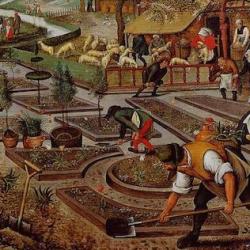In his lucid introduction to The Market System: What It Is, How It Works, and What to Make of It , Charles Lindblom notes the divergence of the contemporary market system from the ideals of Adam Smith – “a market system tied to a minimal state.”
He notes (p. 8), “In our time it is a governed market system, heavily burdened or ornamented with what old-fashioned free marketers decry as ‘interferences.’ In these systems, the state is the largest buyer: it has a long shopping list, including a military force, highways, and the services of police officers and bureaucrats. It is a mammoth supplier as well, although in providing many of its services—elementary education, as an example—it usually gives away the ‘product’ rather than sells it. Rather than let supply and demand set prices, it often does so itself: keeping agricultural prices high to aid farmers, or holding agricultural prices down to curb distress among the urban poor. It forbids some kinds of sales: most nations now prohibit slavery. It taxes, not simply to raise revenue but to curb some industries, like tobacco. One way or another it subsidizes most industries, almost all of which hold their hands out. It is a gigantic borrower and a frequent lender. It engages in sales promotion abroad to enlarge overseas markets for its entrepreneurs. It collects enormous funds to disperse through social welfare programs. And it is a powerfully active manager of supplies of money and credit both through its controls over banking and its own fiscal policy.”













